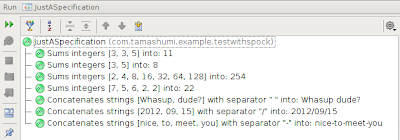Hierarchical queries (CONNECT BY … START WITH …) are used when retrieving data from tree-like structures. You use them if for example you want to retrieve all people who are directly or indirectly below a certain person in a company hierarchy. However, if you use joins and add some other conditions in the WHERE clause then the effect of the query is not obvious.
The good description of hierarchical queries can be found on the page
http://download.oracle.com/docs/cd/B10501_01/server.920/a96540/queries4a.htm#2053937 There are 2 important points in this article:
* If the|WHERE| predicate contains a join, Oracle applies the join predicates /before/ doing the |CONNECT| |BY| processing.
* If the |WHERE| clause does not contain a join, Oracle applies all predicates other than the|CONNECT| |BY| predicates _/after/_doing the |CONNECT| |BY|processing without affecting the other rows of the hierarchy. What does it mean? How does it work? In order to explain this I will describe the error I came across before I understood how the hierarchical queries really work. The query was meant to return all direct and not direct superiors for a given customer (some customers work in companies).
SELECT c.* FROM customer_all c CONNECT BY PRIOR c.customer_id_high = c.customer_id START WITH c.customer_id = :cust_id
This worked fine. However we had to change the query in order to return billing address of customers. Each customer can have many addresses, but only one of them is a billing one. Such address has the flag CCBILL set to ‘X’. Thus, the query was changed into this one:
SELECT level, c.*, cc.*
FROM customer_all c,
ccontact_all cc
WHERE c.customer_id = cc.customer_id
AND cc.ccbill = 'X'
CONNECT BY PRIOR c.customer_id_high = c.customer_id
START WITH c.customer_id = :cust_id
That was a mistake. The condition c.customer_id = cc.customer_id was applied before CONNECT BY whearas cc.ccbill = ‘X’ was executed after CONNECT BY. A customer (let’s suppose his/her customer_id = 123456) had two addresses, while his superior had one address and his superior’s superior had also one address. The query was executed in the following way (I omit stage irrelevant to this example): Stage 1: 2 records are found for the client 123456: one for his billing address and one for another address. They have LEVEL=1 Stage 2: CONNECT BY clause is applied to both records with LEVEL=1 from the previous stage. Thus, the superior of 123456 is added twice to the result set and there are two records with LEVEL=2 Stage 3: CONNECT BY clause is applied to both records with LEVEL=2 from the previous stage. Thus the superior of the superior of 123456 is added twice to the result set and there are two records with LEVEL=3 Stage 4: The non-billing address of customer 123456 is removed from the result set, but his superiors records which were added because of this record are not removed, as their address is not a billing one (they do not have any non-billing address). As a result, the query returned 5 records, although it was expected to return 3 records. The records of the superior and superior’s superior were duplicated because of the second address of 123456. The record with the second address was removed but the branch it created was preserved. The solution was to check in CONNECT BY clause if the address in the PRIOR record is the billing one
SELECT level, c.*, cc.*
FROM customer_all c, ccontact_all cc
WHERE c.customer_id = cc.customer_id
AND cc.ccbill = 'X'
CONNECT BY PRIOR c.customer_id_high = c.customer_id
AND PRIOR cc.ccbill = 'X'
START WITH c.customer_id = :cust_id
There is a clearer solution available – to make a join with addresses table after executing the hierarchical query:
SELECT *
FROM (SELECT c. *
FROM customer_all c,
CONNECT BY PRIOR c.customer_id_high = c.customer_id
START WITH c.customer_id = :cust_id) c,
ccontract_all cc
WHERE c.customer_id = cc.customer_id
AND cc.ccbill = 'X'
There is another interesting issue. When I changed the join to ANSI style (JOIN … ON instead of condition in the WHERE clause) then the execution time increased a few hundred thousand times. It seems that Oracle 9 on which I tested this query does not cope well with ANSI join syntax. This is not a surprise. Once we had to rapidly convert many views in a system. They used ANSI-style joins and when they were used in queries using Oracle-style joins then their performance dropped rapidly. We had to convert the views to use Oracle-style joins.
 Couple of years ago I wasn't a big fan of unit testing. It was obvious to me that well prepared unit tests are crucial though. I didn't known why exactly crucial yet then. I just felt they are important. My disliking to write automation tests was mostly related to the effort necessary to prepare them. Also a spaghetti code was easily spotted in test sources.
Couple of years ago I wasn't a big fan of unit testing. It was obvious to me that well prepared unit tests are crucial though. I didn't known why exactly crucial yet then. I just felt they are important. My disliking to write automation tests was mostly related to the effort necessary to prepare them. Also a spaghetti code was easily spotted in test sources.
